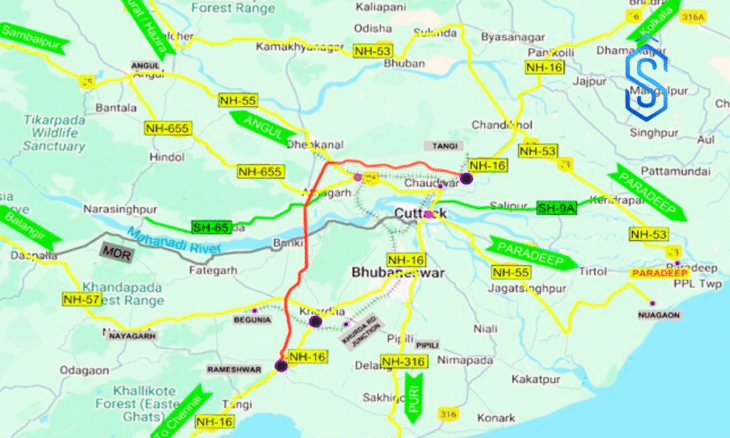New Delhi: The Cabinet Committee on Economic Affairs, chaired by Prime Minister Narendra Modi, has approved the construction of the Bhubaneswar Bypass, a 6-lane, access-controlled Capital Region Ring Road in Odisha.
The project, covering 110.875 km, will be developed on the Hybrid Annuity Mode (HAM) at a capital cost of ₹8,307.74 crore.
Bhubaneswar Bypass to Ease Congestion and Improve Logistics
Currently, the Rameshwar–Tangi stretch of the National Highway experiences heavy congestion as it passes through the densely urbanized cities of Khordha, Bhubaneswar, and Cuttack.
Also Read: Kota Bundi Airport: Cabinet Approves Greenfield Development at INR 1507 Crore
The Bhubaneswar Bypass is designed to divert heavy commercial traffic away from these urban centers, improving the efficiency of freight movement, reducing logistics costs, and facilitating socio-economic growth in Odisha and neighboring states.
Integration with National Highways and Economic Nodes
The project alignment will connect with three major National Highways – NH-55, NH-57, and NH-655 – and one State Highway (SH-65). It will also strengthen multi-modal integration by linking with:
- 10 Economic Nodes
- 04 Social Nodes
- 05 Logistic Nodes
- 1 Major Railway Station
- 1 Airport
- 1 Proposed Multi-Modal Logistics Park (MMLP)
- 2 Major Ports
This connectivity will support faster movement of goods and passengers, bolstering Odisha’s role as a key hub for trade and industrial development.
Also Read: Network Planning Group Reviews Seven Infrastructure Projects Under PM GatiShakti
Employment and Economic Impact of Bhubaneswar Bypass
The construction of the Bhubaneswar Bypass is expected to create approximately 74.43 lakh person-days of direct employment and 93.04 lakh person-days of indirect employment.
Beyond job creation, the project will enhance connectivity between major religious and economic centers, promote industrial expansion, and open new avenues for socio-economic prosperity in the region.








